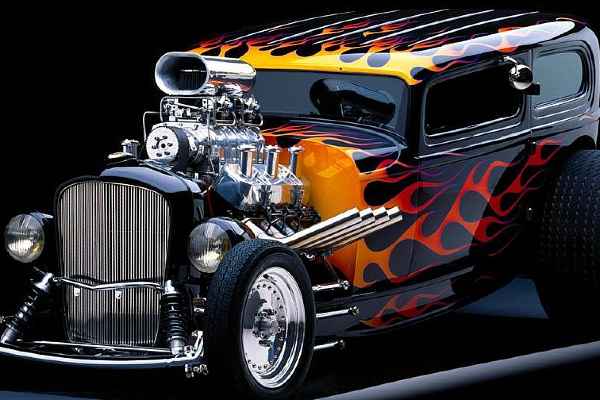For all you geeks out there powering our tech progress, here’s a cool way to calculate the horsepower you need to cruise at 65 mph on the flat — thanks to Peter Offenhartz. It turns out to be amazingly low — only about 20 hp.
The Trick
Since he does not really explain why his method works, here’s the trick. He has you measure how long it takes your care to slow from 70 mph to 60 mph, with the car in neutral.
Think about why it slows — mostly air resistance and rolling friction — that’s complicated. But those details don’t matter at all. We know they are working hard to stop your car. That work is so-many horsepower. And if your engine supplies that many horsepower, it would overcome those forces and keep you rolling at 65 mph. So he calculates how much hp the stopping forces must be using to slow you down, and that’s how much it would take to keep you going.
One more thing. Yes you can calculate the stopping horsepower from how long it takes to slow from 70 mph to 60 mph provided you know the weight (mass) of the car. That’s because the kenetic energy of the car depends only on speed and mass. And power is energy change per second. Enjoy.
Now Peter Will Explain the Details
People find it difficult to believe that their car only needs about twenty horsepower to cruise along at a steady 65 mph. Here’s how you can check for yourself. You’ll need a stopwatch, a good, flat, empty road, wind-free conditions, and at least one passenger plus the driver. It’s safer to have two helpers because this experiment is a little dangerous.
Here’s the procedure. Turn off the air conditioner. Accelerate the car to just over 70 mph (I’m assuming the speed limit is 65) and put the car in neutral. Start the watch when the speed drops to 70. Stop it when your speed hits 60. Repeat the experiment at least five times each in both directions. That’s it for the experimental side. The safest way to do this is if one person (in the back seat) watches the speedometer and calls out the numbers while a second person handles the watch and records the times. That leaves the driver free to keep an eye on traffic. There’s a danger of being rear-ended when slowing down below the speed limit. And you don’t want to be near other cars because the effects of wind drafting will ruin the accuracy of the test. The best time to do the experiment is very early on a Sunday morning.
Now to the mathematics. The power requirement of your car is
P = (kg) x V x DV / Dt
Here (kg) is the weight of the car plus passengers in kilograms (pounds divided by 2.2), V is the average speed of the car in meters per second (65 mph is 29.1 m/s), DV is the change in speed (10 mph is 4.47 m/s), Dt is the average time interval in seconds, and P is the power requirement in watts (Joules per second). To convert watts to horsepower divide P by 745. The result is only as accurate as your speedometer and your ability to read it, which is probably around 10% overall.
The reason the road must be flat is that even a mild 1% grade changes the power requirements drastically. For example, the extra power required to climb a 1% grade at 65 mph (or any speed V) is
P2 = (kg) x g x V / 100
Here g is the acceleration of gravity, 9.8 meters per second per second, and P2 is the extra power required. The ratio of the power required to climb a 1% grade to the power required to keep the car running at a steady speed is simply the ratio of the acceleration of gravity, g to the measured deceleration DV/Dt:
P2/P = g x (Dt/DV) / (100)
Here the factor of 100 reflects the 1% grade; drop this factor to convert to a percentage. The ratio can exceed 25%, so make sure the road is very flat!
Here are two exercises to test your understanding: (1) How much power is required for a 4000-lb car to climb a 5% grade at a steady 60 mph? (2) How much power does it take to accelerate from zero to 60 mph in 12 seconds?
(c) 2007 by Peter O’Donnell Offenhartz


 Ripped Apart
Ripped Apart

